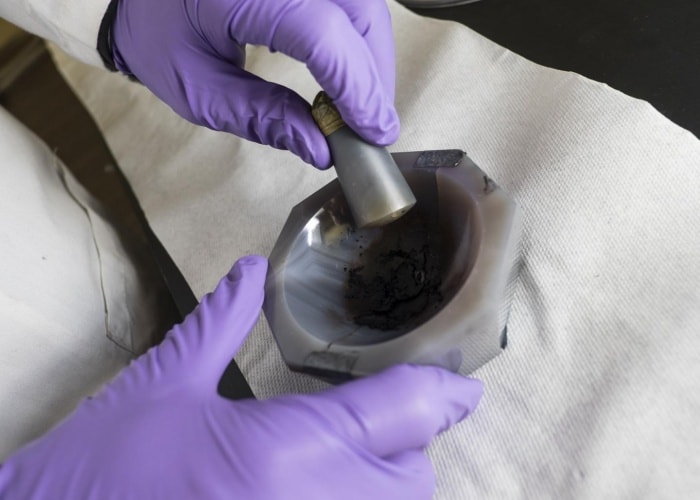Graphene nanoribbons which can be used to boost a materials’ electronic properties and strength hold promise for a number of applications.
However, it’s fair to say that the harsh chemical reactions required to produce these exotic structures have held back the deployment of the technology.

Now, researchers at Rice University in the US have found a new way of producing the material by grinding modified nanotubes with a mortar and pestle. According to materials scientist Pulickel Ajayan this breakthrough – reported in the current issue of Nature Communications - has been achieved by mixing two types of chemically modified nanotubes which, when they come into contact during grinding, react and unzip into nanoribbons.
The team claims that the new process could lead to significant advances in nanomaterials development. “If we can use nanotubes as templates, functionalise them and get reactions under the right conditions, what kinds of things can we make with a large number of possible nanostructures and chemical functional groups?” said Ajayan.
In their tests, the researchers prepared two batches of multi-walled carbon nanotubes, one with carboxyl groups and the other with hydroxyl groups attached. When ground together for up to 20 minutes with a mortar and pestle, the chemical additives reacted with each other, triggering the nanotubes to unzip into nanoribbons, with water as a byproduct.
The experiments were duplicated by participating labs at Rice, at the Indian Institute of Technology and at the Lebanese American University in Beirut. They were performed in standard lab conditions as well as in a vacuum, outside in the open air and at variable humidity, temperatures, times and seasons.
Intriguingly, despite the promise of the work, the researchers still don’t know precisely what’s happening at the nanoscale. “It is an exothermic reaction, so the energy’s enough to break up the nanotubes into ribbons, but the details of the dynamics are difficult to monitor,” said Ahmad Kabbani, a professor of chemistry at the Lebanese American University, Beirut. “There’s no way we can grind two nanotubes in a microscope and watch it happen. Not yet, anyway,” he added.




Nanogenerator consumes CO2 to generate electricity
Whoopee, they've solved how to keep a light on but not a lot else.